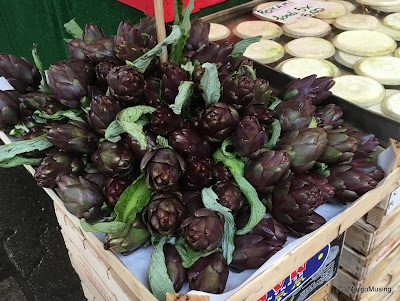Hay is about 2 1/2 hours drive from my home, so this meant getting up early for the drive (and realising, as I went, that it has been well over a decade since I last crossed the Severn bridge, and that I should perhaps make plans to visit Wales again)
The first event I had booked for was Chris Riddell's event: 'The Hay Literary Lecture: The Laureate's Goodbye' . Chris was appointed as Children's Laureate in June 2015, so will be stepping down on 7th June this year.
The format of the event was that we were all given postcards as we queued, on which we could write down questions for Mr Riddell. He then selected cards at random, and answered the questions (with art and talking)
He started out by talking a little bit about being Laureate (or, as he explained he has been referred to, ' the Children's Lauderette'... The best part about being Children's Laureate is, apparently, that you are given a medal, which you can keep on the mantelpiece and creep downstairs to stroke, when you need reassurance! (although it does not, we learned, get you out of doing your share of the housework...)
Questions included asking about how to improve someone's confidence in their art (the answer, with reference to having had Raymond Briggs as a personal tutor at Art College, was 'encouragement') , whether tea or coffee is more effective when dealing with artist's block...
Chris also talked about the discussion he had with his publisher before the first Ottoline book was published, about the extras required..including foiled endpapers, miniature books in the back of the book and so forth..and the pain of being made to give away his first two copies to children of the Prime Minister and Chancellor of the Exchequer, because he happens to be at 10 Downing Street (and lets face it, who hasn't had that experience?)
It was so much fun!
After the event, Chris did a signing. The queue was long. I was near the end, but he was still very smiley and friendly when I reached the front (and there are worse things than standing in a slowly moving queue, reading, in the sunshine)
Such a nice man, and so talented!
(a extract from the event is on the BBC site: here






















































